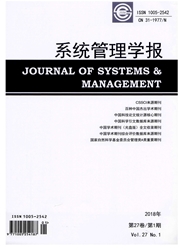

 中文摘要:
中文摘要:
研究了城市燃气管网中工商业用户分时定价策略和政府补贴问题,构建了工商业用户需求响应模型,给出了工商业用户的动态响应过程。为了得到燃气公司的最优定价策略和政府补贴因子,分析了城市燃气管网负荷、燃气公司收益和工商业用户效益的动态变化过程。研究结果表明:对工商业用户分时定价,存在一个最优的分时价格关系能有效降低燃气管网的峰谷负荷差,起到削峰填谷的作用。同时,实施分时定价后,会提高工商业用户效用,降底燃气公司收益。因此,政府应给予燃气公司必要的补贴作为激励,以促使工商业天然气分时定价顺利推行。
 英文摘要:
英文摘要:
This paper establishes a demand response model to study the industrial user TOU(time-of-use)pricing and government subsidy policy in an UGPN(urban gas pipeline network),which incarnates the dynamic changing process of demands and running states in an UGPN.In order to obtain the optimal TOU price and government subsidies,the UGPN peak-valley load difference,gas operator profit and industrial user benefit are analyzed.The results indicate the existence of an optimal TOU price to reduce the peakvalley load difference and load shifting effectively.Furthermore,rising peak price will increase the benefits of the end-users,while those of the gas operator decrease.Consequently,the government should develop a level of subsidy for gas operator as an incentive mechanism,which may promote gas operators' enthusiasm for implementing TOU pricing.
 同期刊论文项目
同期刊论文项目
 同项目期刊论文
同项目期刊论文
 Simulation on time-of-use pricing policy in China urban natural gas pipeline network based on multi-
Simulation on time-of-use pricing policy in China urban natural gas pipeline network based on multi- An optimal time-of-use pricing for urban gas: A study with a multi-agent evolutionary game-theoretic
An optimal time-of-use pricing for urban gas: A study with a multi-agent evolutionary game-theoretic A hybrid coding SA method for multi-item capacity-constrained production and delivery scheduling pro
A hybrid coding SA method for multi-item capacity-constrained production and delivery scheduling pro Application of Hybrid GA-SA Heuristics for Single-job Production-delivery Scheduling Problem with In
Application of Hybrid GA-SA Heuristics for Single-job Production-delivery Scheduling Problem with In 期刊信息
期刊信息
